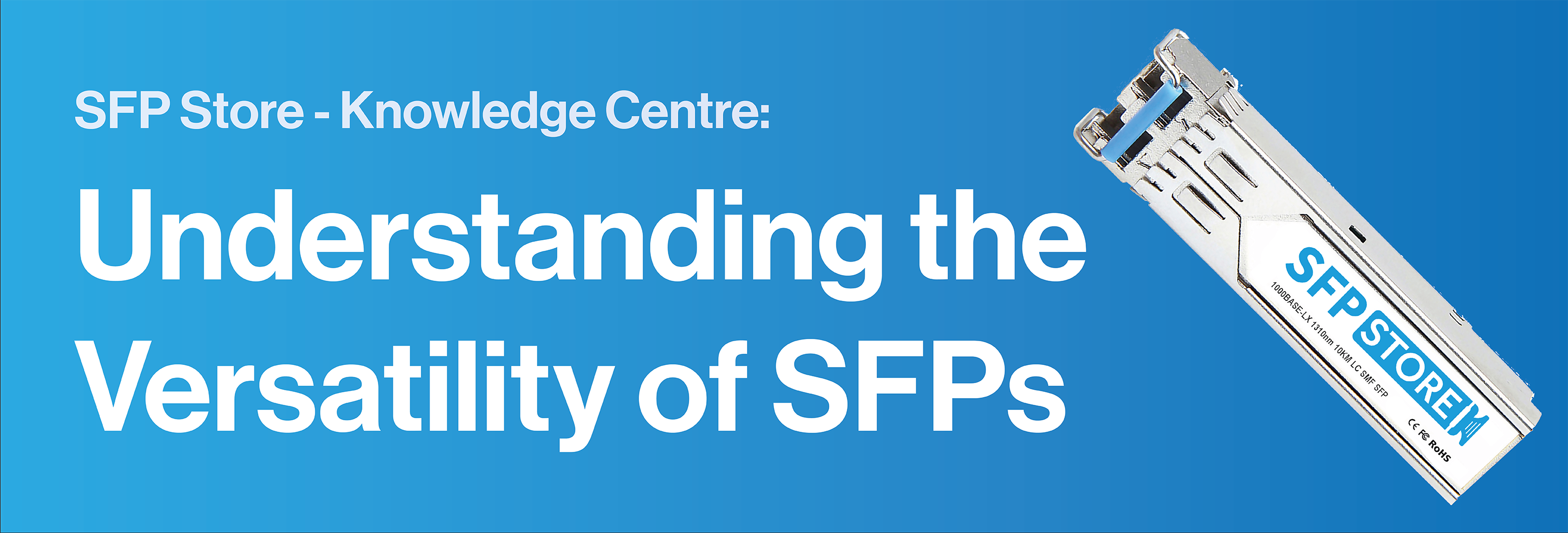SFPs, also known as small form-factor pluggable modules, have become integral components in modern networking, offering versatile connectivity options for devices such as routers, switches, and network interface cards.
Beyond Copper: Exploring SFPs Across Networking Environments
Fibre Optic Connectivity
While Copper SFPs are well-suited for short-distance connections, their fibre optic counterparts excel in long-range applications. Fibre Optic SFP modules utilise light signals to transmit data, making them ideal for scenarios where extended distances and high data rates are crucial, such as in MANs (Metropolitan Area Networks) and WANs (Wide Area Networks).
Multimode and Singlemode SFPs
SFP modules come in different variants, all to suit specific needs. Multimode SFPs are suitable for shorter distances within buildings or schools, while singlemode SFPs are designed for longer distance such as between buildings.
Specialised Applications
SFP modules are commonly used in telecommunications, providing flexible and scalable solutions for the evolving demands of voice, data, and video transmission.
Data Centres and High-Performance Computing
SFP modules, both copper and fibre optic, are extensively used in data centres to interconnect servers, storage devices, and networking equipment. Their hot-swappable nature allows for easy installation and removal.
What is MSA?
MSA stands for Multi-Source Agreement. The MSA facilitates the open market for SFP transceiver modules. They make sure that each third party manufacturer creates SFPs that are 100% compatible with OEM equipment.
The MSA reassures users that any third party SFP module has the same standards as OEM brands.
Factors When Selecting SFPs
Data Rates
SFP Modules support various data rates, ranging from Fast Ethernet to 100Gigabit and beyond. The choice of SFP depends on the specific requirements of the network equipment such as the switch.
Distance Considerations
Understanding the distance between connected devices is crucial. Copper SFPs are suitable for shorter distances whereas Fibre Optic SFPs are preferred for longer spans. Singlemode SFPs for instance, can transmit data from distances that range from 2km to 80km.
Compatibility and Environment
Considering the environment is essential. For example, in environments with electromagnetic interference (EMI), fibre optic SFPs might be preferred due to their immunity to EMI.
The temperature range required is also a consideration. Extended temperature modules may be required in non-standard environments.
Cost and Scalability
While Copper SFPs are more cost effective for short distance connections, the overall cost of networking infrastructure, including cabling and switches, should be considered for long term scalability.
It may be more beneficial to use Fibre Optic SFPs in the long run depending on budget constraints.
SFPs as Building Blocks of Modern Networks
In conclusion, SFP modules are indispensable components in the modern network. Whether it provides cost effective solutions for short distance connections with Copper SFPs or enabling high-speed, long-range connectivity with fibre optic variants, SFPs serve as the building blocks that empower the seamless flow of data in diverse networking environments. The versatility and scalability of SFP modules make them important assets for organizations navigating the networking landscape of information technology.

